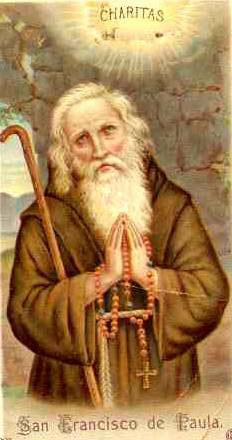Feast of the Presentation of the Blessed Virgin Mary
FREE Catholic Classes
The Protoevangel of James, the Gospel of Pseudo-Matthew, the Gospel of the Nativity of Mary, and other apocryphal writings (Walker, "Apocryph. Gosp.", Edinburgh, 1873) relate that Mary, at the age of three, was brought by her parents to the Temple, in fulfillment of a vow, there to be educated. The corresponding feast originated in the Orient, probably in Syria, the home of the apocrypha. Card. Pitra (Anal. Spici. Solesmensi, p. 265) has published a great canon (liturgical poem) in Greek for this feast, composed by some "Georgios" about the seventh or eighth century. The feast is missing in the earlier Menology of Constantinople (eighth century); it is found, however, in the liturgical documents of the eleventh century, like the "Calend. Ostromiranum" (Martinow, "Annus græco-slav.", 329) and the Menology of Basil II ( e’ísodos tes panagías Theotókon ). It appears in the constitution of Manuel Comnenos (1166) as a fully recognized festival during which the law courts did not sit. In the West it was introduced by a French nobleman, Philippe de Mazières, Chancellor of the King of Cyprus, who spent some time at Avignon during the pontificate of Gregory XI. It was celebrated in the presence of the cardinals (1372) with an office accommodated from the office chanted by the Greeks. In 1373 it was adopted in the royal chapel at Paris, 1418 at Metz, 1420 at Cologne. Pius II granted (1460) the feast with a vigil to the Duke of Saxony. It was taken up by many dioceses, but at the end of the Middle Ages, it was still missing in many calendars (Grotefend, "Zeitrechnung", III, 137). At Toledo it was assigned (1500) by Cardinal Ximenes to 30 September. Sixtus IV received it into the Roman Breviary, Pius V struck it from the calendar, but Sixtus V took it up a second time (1 September, 1585). In the province of Venice it is a double of the second class with an octave (1680); the Passionists and Sulpicians keep it as a double of the first class; the Servites, Redemptorists, Carmelites, Mercedarians, and others as a double of the second with an octave. In the Roman Calendar it is a major double. The Greeks keep it for five days. In some German dioceses, under the title "Illatio", it was kept 26 November (Grotefend, III, 137).
Join the Movement
When you sign up below, you don't just join an email list - you're joining an entire movement for Free world class Catholic education.

-

- Stations of the Cross
- Easter / Lent
- 5 Lenten Prayers
- Ash Wednesday
- Living Lent
- 7 Morning Prayers
- Mysteries of the Rosary
- Litany of the Bl. Virgin Mary
- Popular Saints
- Popular Prayers
- Female Saints
- Saint Feast Days by Month
- Pray the Rosary
Pope Francis’ April Prayer Intention: Using Technology to Strengthen Human Connections
Finding Peace Through Prayer in a World of Worry
Trump Administration Withholds Federal Grants from Planned Parenthood Over DEI and Civil Rights Concerns
Daily Catholic
 Daily Readings for Wednesday, April 02, 2025
Daily Readings for Wednesday, April 02, 2025 St. Francis of Paola: Saint of the Day for Wednesday, April 02, 2025
St. Francis of Paola: Saint of the Day for Wednesday, April 02, 2025 Prayer for God's Help in Daily Actions: Prayer of the Day for Friday, March 14, 2025
Prayer for God's Help in Daily Actions: Prayer of the Day for Friday, March 14, 2025 Daily Readings for Tuesday, April 01, 2025
Daily Readings for Tuesday, April 01, 2025 St. Hugh of Grenoble: Saint of the Day for Tuesday, April 01, 2025
St. Hugh of Grenoble: Saint of the Day for Tuesday, April 01, 2025- To Perceive Animals as God's Gifts: Prayer of the Day for Thursday, March 13, 2025
![]()
Copyright 2025 Catholic Online. All materials contained on this site, whether written, audible or visual are the exclusive property of Catholic Online and are protected under U.S. and International copyright laws, © Copyright 2025 Catholic Online. Any unauthorized use, without prior written consent of Catholic Online is strictly forbidden and prohibited.
Catholic Online is a Project of Your Catholic Voice Foundation, a Not-for-Profit Corporation. Your Catholic Voice Foundation has been granted a recognition of tax exemption under Section 501(c)(3) of the Internal Revenue Code. Federal Tax Identification Number: 81-0596847. Your gift is tax-deductible as allowed by law.


 Daily Readings for Wednesday, April 02, 2025
Daily Readings for Wednesday, April 02, 2025 St. Francis of Paola: Saint of the Day for Wednesday, April 02, 2025
St. Francis of Paola: Saint of the Day for Wednesday, April 02, 2025 Prayer for God's Help in Daily Actions: Prayer of the Day for Friday, March 14, 2025
Prayer for God's Help in Daily Actions: Prayer of the Day for Friday, March 14, 2025 St. Hugh of Grenoble: Saint of the Day for Tuesday, April 01, 2025
St. Hugh of Grenoble: Saint of the Day for Tuesday, April 01, 2025

